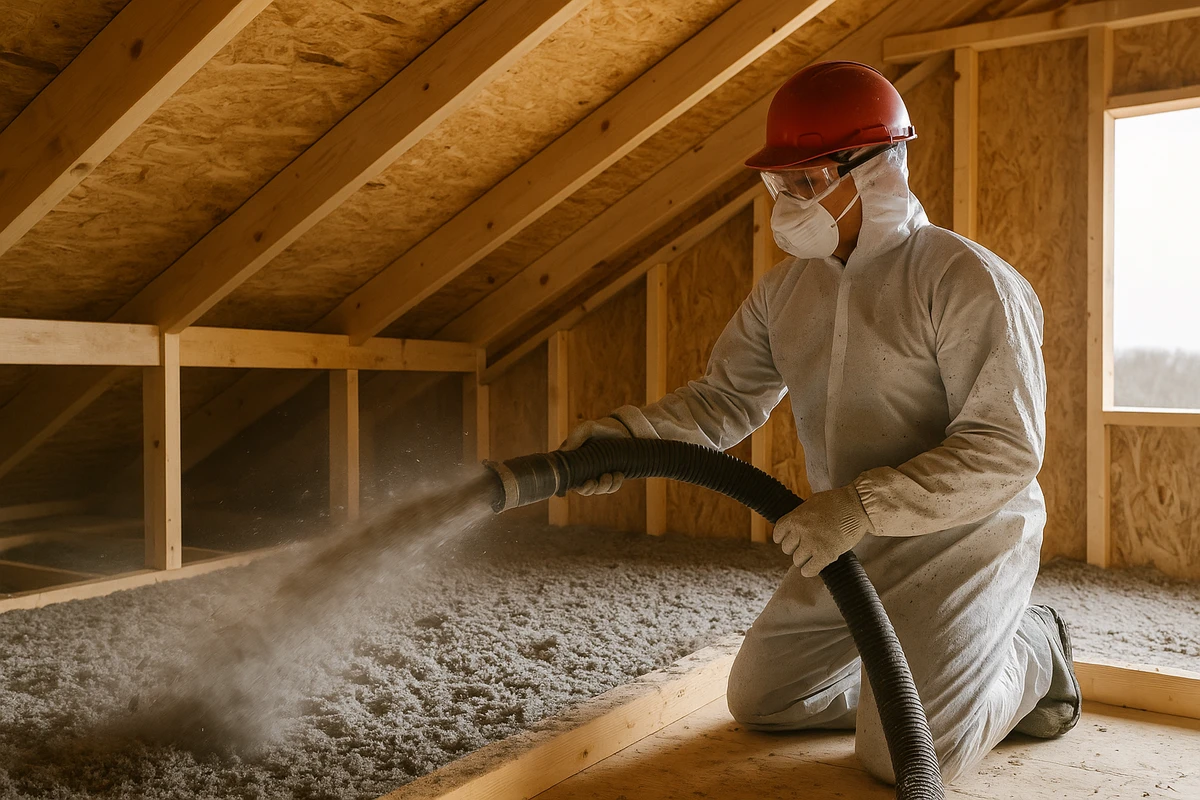Cellulose Insulation
Request A Quote
Book Phone Consultation
Cellulose insulation represents one of the most environmentally responsible choices available while delivering exceptional thermal and acoustic performance. Made from up to 85% recycled paper products—primarily post-consumer newsprint and cardboard—cellulose transforms materials destined for landfills into high-performance home insulation. The manufacturing process requires significantly less energy than producing fiberglass or foam alternatives, resulting in a smaller carbon footprint. For homeowners seeking both sustainability and effectiveness, cellulose offers an ideal balance of environmental stewardship and proven energy-saving results.
Superior Performance Characteristics
Cellulose insulation excels in ways that surprise many homeowners. Its dense composition provides excellent resistance to air infiltration, reducing drafts more effectively than many alternatives. The material offers outstanding soundproofing capabilities, absorbing sound waves to create quieter, more peaceful interior spaces. Fire safety is ensured through boron-based treatments that make cellulose naturally fire-resistant without toxic chemicals. These same treatments provide pest deterrent properties that discourage insects and rodents. The material's ability to absorb and release moisture helps regulate humidity levels without compromising insulating performance, creating healthier indoor environments.
Installation Methods
We install cellulose insulation using techniques optimized for each application. For open attics, loose-fill cellulose is blown to the desired depth, creating a thick blanket that conforms perfectly to joists and obstacles. This method allows quick coverage of large areas with consistent depth and no gaps. For existing walls, we use the dense-pack method, pneumatically installing cellulose at high density through small access holes. The material compresses slightly during installation, then expands to completely fill cavities and resist settling. For new construction walls, damp-spray application adheres cellulose to studs and sheathing, providing excellent coverage before drywall installation.
Long-Term Durability
When properly installed, cellulose insulation maintains its performance for decades. The fire-retardant and pest-deterrent treatments are permanent, integrated into the fiber structure rather than surface coatings that might degrade. Cellulose's natural ability to handle moisture without sustaining damage or losing R-value makes it remarkably resilient in real-world conditions. Unlike some insulation types that can break down or compress over time, quality cellulose installation retains its density and effectiveness. Should settling occur in attic applications—typically minimal with proper installation—adding material to restore depth is simple and inexpensive.
Environmental and Financial Benefits
Choosing cellulose insulation delivers benefits that extend beyond your home. The high recycled content reduces landfill waste and conserves natural resources. Lower embodied energy compared to other insulation types means reduced environmental impact from manufacturing. Energy savings from improved insulation directly reduce your carbon footprint while lowering utility bills by 20-30% or more in many cases. Cellulose typically costs less than spray foam while outperforming standard fiberglass batts, offering excellent value. Many utility companies and government programs offer rebates for cellulose installation, further improving return on investment while supporting your commitment to sustainable living.